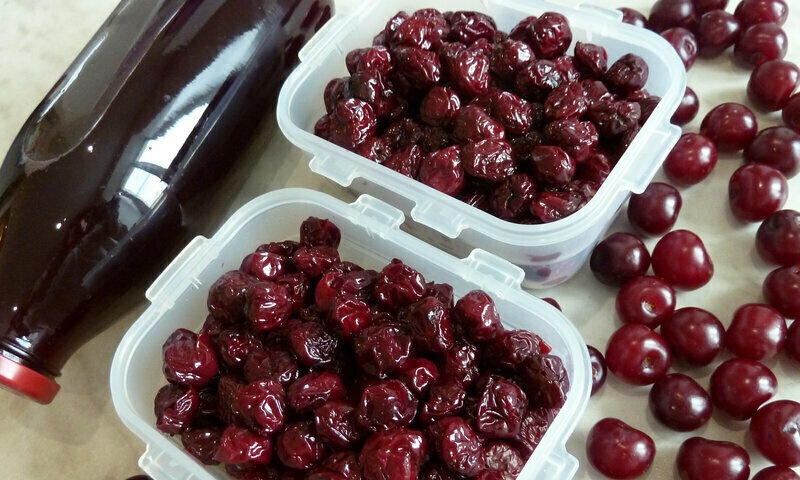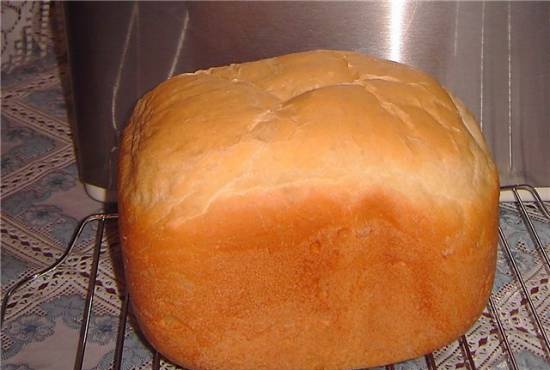I thought for a long time which of the yoghurt Temoks to link to, but I could not find a suitable Temko. I am now reading a book by Lyudmla Rudnitskaya "Joint gymnastics". There, among other things, a very interesting section on nutrition, in particular, about various fermented milk products, and how some of them can be made at home.
I'll try to paste all the text into the spoilers.
Here's about the usefulness of different sour milk:
Natural fermented milk drinks are prepared from milk by fermenting various types of lactic acid bacteria. Residents of Greece and Rome, India and the Middle East, Transcaucasia, in ancient times, used fermented milk products, which were prepared from cow, sheep or donkey milk. The Scythians knew kumis - a fermented milk drink made from mare's milk. Sour milk was mentioned by Homer in the Odyssey: the heroes found buckets and mugs full of thick sour milk in the cave of the Cyclops Polyphemus.
Why did people love fermented milk products for so long? First, for purely practical reasons: sour milk is stored longer than regular milk. Secondly, it has a beneficial effect on the body. Gradually, different peoples appeared national fermented milk drinks: yogurt and varenets - in Russia, fermented baked milk - in Ukraine, matsun - in Armenia, yogurt - in Georgia, chal - in Turkmenistan, kurunga - in North-East Asia, ayran and kefir - in the North Caucasus, kumis - in Bashkiria and Tatarstan, leben - in Egypt, yagurt - in Bulgaria, Greece, Turkey and Romania, burial milk - in Norway.
How do these products differ from each other?
• Sour milk. This is a fermented milk drink made from pasteurized milk by fermenting it with a ferment prepared on pure cultures of lactic acid bacteria. Depending on the type of bacteria, they distinguish between common yogurt, Mechnikovsky, southern, Ukrainian (fermented baked milk), acidophilic and Varenets.
Ordinary yogurt is prepared on pure cultures of lactic acid streptococci; it has a delicate curd with a refreshing, pleasant, slightly acidic taste.
Mechnikovskaya yogurt is prepared from pure cultures of the Bulgarian bacillus and lactic acid streptococci; it differs from the usual one in a denser clot and sour taste.
Southern yogurt is made from milk, lactic acid streptococci, sticks and yeast. It has the consistency of sour cream; its taste is sour, tingling, refreshing.
Varenets is made from sterilized milk kept at high temperature for 2-3 hours (stewed milk). It has a dense, slightly viscous consistency, sour taste with a sweetish aftertaste of stewed milk, creamy color. Varenets is cooked on the same crops as Mechnikov's curdled milk.
Fermented baked milk is prepared from pure cultures of lactic acid streptococcus. It is creamy in color, resembles sour cream in taste and consistency, but has a peculiar sweetish taste. The calorie content of fermented baked milk is much higher than the calorie content of other varieties of yogurt, its fat content is about 6%.
• Matsoni (matsun, katyk). These are different names for the same type of product, which is made from cow, buffalo, sheep, camel or goat milk.The main active microflora is Bulgarian bacillus and thermophilic lactic acid streptococci. Milk is fermented at elevated temperatures and fermented in a heat-retaining device.
• Dzhugurt. Favorite drink in the North Caucasus. This is squeezed sour milk that looks like sour cream or pasta. Fat content - 12-13%, water content - no more than 70%.
• Kurunga. Fermented milk drink, widespread in North-East Asia among the Buryats, Mongols, Tuvans. The method of cooking kurunga has been known since ancient times. For the Mongols and Tuvans, who led a nomadic lifestyle, in the summer kurunga was one of the most important products. Since the 18th century, other peoples (Buryats, Khakases) also learned the secret of cooking kurunga. Kurunga is prepared through double fermentation - lactic acid and alcohol. The alcohol content usually does not exceed 1%.
• Ayran. A very common drink among the peoples of Central Asia, the Caucasus, Tataria, Bashkiria. It is prepared from cow, goat, sheep milk. Some peoples of our country call this a soft drink, which is a mixture of sour milk and water. The Uzbek recipe, for example, provides for the dilution of yogurt with cold water in a 1: 1 ratio, after which the drink is poured into glasses with ice.
Fermented milk products are divided into two groups: the first includes products obtained as a result of lactic acid fermentation only, the second - products obtained as a result of lactic acid and alcoholic fermentation.
The first group includes yogurt, fermented baked milk, acidophilic milk. Their distinctive characteristics are fermented milk taste, density, uniformity, absence of gas bubbles.
The second group includes kefir, koumiss, acidophilus-yeast milk. In addition to lactic acid bacteria, they contain a small amount of alcohol and carbon dioxide, because of this, drinks have a sharper taste, and the clot is permeated with small gas bubbles.
Recent research by scientists has shown that lactic acid sticks, as well as yeast, are antibiotics that affect intestinal, paratyphoid, typhoid, dysentery and tuberculosis bacilli, as well as putrefactive microorganisms. In fermented milk products (these include, in addition to drinks, cheeses, sour cream, whey), many of the nutrients contained in milk become even more useful. For example, thanks to proteolytic enzymes secreted by the milk microflora, proteins are better absorbed. Mineral substances are also better absorbed, and components are formed from the carbohydrate (lactose) that enhance the dietary properties of these products.
The content of lactic acid and lactic acid bacteria in fermented milk drinks gave basis to I.I.Mechnikov to create a scientific theory that asserts the expediency of using these drinks. Dealing with the problem of longevity, the scientist came to the conviction that premature old age can and should be fought. He drew attention to the fact that many residents of Bulgaria and the Caucasus live for a very long time. This longevity, Mechnikov believed, is 70% dependent on the use of fermented milk products.
Fermented milk drinks have a number of useful properties:
• stimulate appetite;
• quench thirst;
• increase the secretion of gastric juice;
• enhance the peristalsis of the gastrointestinal tract;
• improve kidney function;
• are antibiotics.
Some recipes:
We prepare fermented milk drinks ourselves
To prepare these healthy drinks, you need to adhere to two basic rules:
• maintain cleanliness;
• milk intended for the preparation of fermented milk drinks must be boiled, then it should be quickly cooled.
Sweet curdled milk
It is made from milk with sugar dissolved in it. Usually, no more than 5% sugar is added in relation to the total weight of the fermented milk. For 900 g of milk, take 50 g of granulated sugar and 50 g of sourdough on pure cultures of lactic acid bacteria.It is better to add sugar before pasteurization of milk in the form of syrup, dissolving it in hot milk.
Sweet curdled milk with vanilla
To obtain a fragrant curdled milk, vanillin can be added to the fermented milk. Vanillin is taken at the tip of a knife, mixed with a small amount of granulated sugar, ground the mixture and added to milk just before fermentation.
Sweet curdled milk with cinnamon
The cinnamon is ground into powder and sieved. For 1 liter of milk, take 1.5 g of cinnamon. Stir the fermented milk thoroughly before pouring so that the cinnamon does not settle to the bottom and is evenly distributed in the finished drink. When making sweet curdled milk with cinnamon, 6% sugar is added.
Sweet curdled milk with honey
Honey can be added to fermented milk or sour milk before eating. 7% natural honey is added, thoroughly mixed with milk, the mixture is pasteurized, cooled and fermented.
Ryazhenka
Prepared from a mixture of milk and cream. The mixture is subjected to heat treatment (simmering) at 95 ° C for 3 hours. Milk is usually fermented only with pure cultures of lactic acid streptococci of thermophilic species. Usually take 50-100 g of sourdough per 1 liter of milk.
Fermented milk fizzy drink (analogue of koumiss)
To bring skimmed cow's milk closer in composition to mare's, add 20% whey and 2.5% sugar. This mixture is pasteurized by heating to 90 ° C, then cooled to 30–33 ° C and fermented with a special starter culture consisting of lactic acid sticks and yeast. Sourdough is added to milk (10-15% sourdough in relation to the weight of milk) and vigorously stirred for 15 minutes to saturate the drink with air, and then left to ferment. After fermentation, the curd is stirred for 15 minutes. The drink is poured into narrow-necked bottles, closed with a cork and left for 3-4 hours at a temperature of 16-18 ° C to accumulate carbon dioxide and alcohol. The bottles are then placed in the refrigerator.
Yogurt and curdled milk drink
Mix yoghurt, yogurt and buttermilk with a whisk, salt and cool. Served in tall glasses. Yogurt and curdled milk - 1.5 cups each, buttermilk - 1 cup, salt - to taste.
Alpine yogurt drink
Unsweetened low-fat yogurt is whisked, gradually adding chilled broth. Mix with chopped herbs, salt to taste. Poured into glasses and sprinkle with finely chopped nuts. The drink can also be served instead of soup. Yogurt - 2 cups, beef broth - 1 cup, walnuts - 50 g, chopped parsley - 2 tablespoons, bouillon cube, salt to taste.
I will list the beneficial properties inherent in the drinks mentioned in this section.
• Destruction of harmful bacteria. Lactic acid bacteria, especially acidophilus bacillus, can persist for a long time in the intestine. As a result, acidity increases, and this inhibits putrefactive bacteria, causing their death.
• Improving metabolism. Lactic acid and alcohol, which is contained in kefir and koumiss, are responsible for this. Once in the body, these substances stimulate the production of gastric juice, increase appetite, and help move food through the intestines. All this has a beneficial effect on the general metabolism.
• Enrichment of the body with vitamins. Some lactic acid bacteria are able to synthesize vitamin C and B vitamins. Scientists have identified several types of bacteria that can provide a daily requirement for vitamin B. According to their calculations, you need to drink 1 liter of a product prepared on the basis of such bacteria.
• Neutralization of radiation exposure. Acidophilus bacillus produces special antibiotic substances that are indispensable in the treatment of the effects of radiation.
If you are too lazy to prepare a natural fermented milk drink, but prefer to buy groceries in the store, keep in mind the following: if the kefir or yogurt you want to buy is stored at temperatures from 0-2 ° C to 6 ° C, then the product is fermented.If the maximum storage temperature is 20–25 ° C, then the product is thermally processed, that is, it does not contain live lactobacilli.
and about cottage cheese
Curd is a curdled milk protein separated from whey. This protein is the most delicate and easily digestible. Nine tablespoons of cottage cheese fully satisfy the daily protein requirement of an adult. Even if the cottage cheese is fat-free, it still contains a lot of calcium, which makes it indispensable in the diet.
Curd is an essential component of a complete and healthy diet. It is rich in calcium and phosphorus, without which the complete formation of the skeletal system is impossible. These substances are needed for children, pregnant women, are necessary for fractures, diseases of the hematopoietic organs, rickets, hypertension, heart disease, kidney disease and many other diseases.
The beneficial properties of cottage cheese are due to its composition. The milk protein casein contained in cottage cheese has a high nutritional value and can replace animal proteins (300 g of cottage cheese is the daily dose of protein required for the body). Mineral substances that make up the curd contribute to the formation and strengthening of bone tissue.
The amino acids contained in the curd help prevent liver diseases, the B vitamins protect against atherosclerosis.
The proteins that make up the curd contain essential amino acids (methionine and choline) and can serve as a substitute for other proteins of animal origin for those who are contraindicated in animal proteins. Cottage cheese is not only rich in essential vitamins, but is also easily absorbed by the body, therefore this product is useful for children and the elderly.
Thanks to its beneficial properties, cottage cheese:
• promotes the formation of hemoglobin in the blood;
• normalizes the work of the nervous system;
• accelerates metabolism;
• improves the regenerative capacity of the nervous system;
• strengthens bone and cartilage tissue.
Cottage cheese must be consumed:
• for the prevention of atherosclerosis (the product contains choline and methionine);
• for the formation of bone tissue (due to the high content of calcium and phosphorus salts);
• for the prevention of heart and kidney diseases;
• to maintain proper metabolism and prevent obesity;
• to prevent anemia, since the minerals in the cottage cheese are involved in the production of hemoglobin.
We cook cottage cheese ourselves
Homemade cottage cheese
To get 100 g of cottage cheese, you need 600 dal of milk, 6 dl of 20% calcium chloride. Add calcium chloride solution to cold pasteurized or boiled milk, stir and bring to a boil. Then immediately remove from heat and cool to room temperature. Throw the resulting unleavened cottage cheese on a sieve, cover with gauze, squeeze and transfer to a jar.
Cottage cheese "tender"
Boil a glass of milk and pour into a glass of sour milk, stir and leave for 30 minutes.
Kefir cottage cheese
Pour a glass of kefir into a container, filling it halfway and put in the microwave for 1-2 minutes. The curd separates and floats on top with the whey underneath. Separate the curd and let cool.
Curd from curdled milk
Put the sour milk on fire and heat to 70–80 ° C. Do not bring to a boil, otherwise the curd will be "rubbery". As soon as the curd separates, remove from heat and place on a sieve (or cheesecloth). Let the whey drain.
The only thing is that the author indicated the unit of measurement in the first cottage cheese recipe
Gave I looked for what it is
Gave such. It turned out that this is the name of the unit of measurement Decaliter. But 1 Decaliter (1 Dal) = 10 liters. So there is probably a typo in the recipe.








